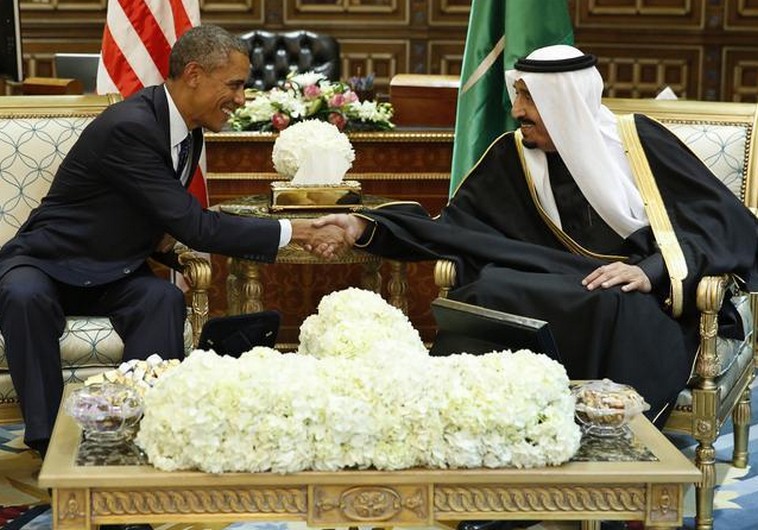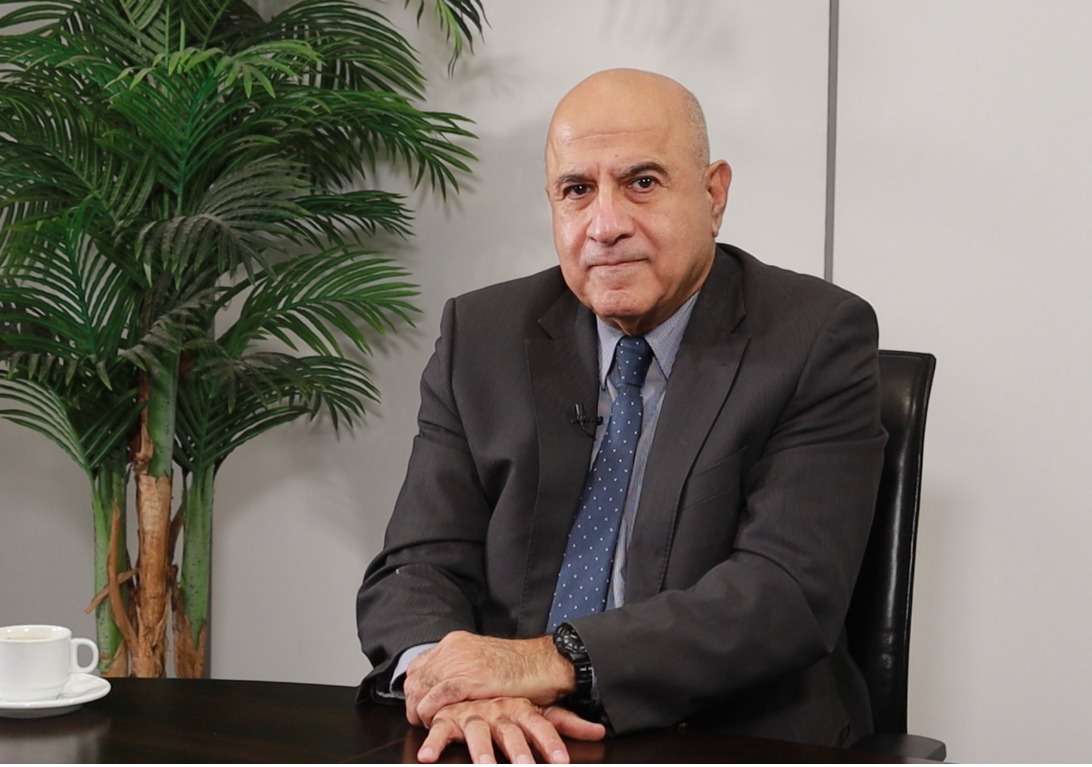What can the Saudi-U.S. relationship achieve?
Manuel Almeida/Al Arabiya/September 05/15
The ties between Saudi Arabia and the U.S. are more resilient and in better shape than what a few gloomy reports and analyses in American media might suggest. Yet, ahead of King Salman’s visit to Washington to meet with President Obama on Friday, it was no secret there were some important differences on key regional issues between the Saudi government and the current U.S. administration. Leaders on both sides have always managed to overcome inevitable divergences. In fact, previous visits by Saudi kings to the U.S. often occurred during periods of serious tensions in the bilateral relationship. For example, in April 2002 the late King Abdullah (at the time de facto regent) met with George W. Bush in Texas. This was only eight months after 15 Saudi nationals were directly involved in the Sept.11 terrorist attacks and when the image of Saudi Arabia among Americans was at its lowest ever. King Abdullah returned three years later during the U.S.-led invasion of Iraq, which the king himself and various senior Saudi government officials had strongly warned the Bush administration against. It ”would not serve America’s interests or the interests of the world”, King Abdullah said in early 2002.
A transformed region
Part of the challenge to make the best out of the relationship is that the region itself has been transformed dramatically. The more stable and predictable Middle East of the 1990s no longer exists. Iraq, one of the three Gulf giants and key piece of the Gulf’s balance of power together with Saudi Arabia and Iran, is in shatters. Some of the elements that have characterized the U.S.-Saudi relationship for many years have changed. The hangover of the invasion of Iraq not only affected the region and opened the doors to Iranian control in Baghdad, but also had a profound impact in the way the current administration perceives America’s regional role. The four goals above all seem to define the current U.S. engagement in the Middle East: the fight against ISIS and al-Qaeda; the nuclear deal with Iran; the commitment to the U.S. military presence in the Gulf, but without enough political backing so far to have the desired stabilizing effect; and not to become embroiled in the region’s intricate conflicts.
Beyond these goals, the Obama administration has never really devised a Middle East strategy, to the desperation of regional partners and most of Washington’s close observers of the region. Then the Arab uprisings and the unprecedented levels of turmoil and violence in the Middle East have come to magnify the feeling of insecurity, not only among the Saudis. The Syrian tragedy in particular became a perfect storm, affecting neighbouring states, igniting radicalism and tensions across the region, all in the face of Washington’s passivity. In the meanwhile, Iran’s Revolutionary Guard Corps, still bent on exporting the revolution, are playing a prominent role in various regional crises.
A need for a tangible achievement
Some of the elements that have characterized the U.S.-Saudi relationship for many years have also changed. In the late 1930s, an American company started to export oil from Saudi Arabia’s Eastern Province and the Saudi oil industry would grow exponentially to become the key source of oil imports for the U.S. Today, the U.S. shale revolution has made the U.S. energy-independent. However, contrary to what some peculiar voices have argued ahead of King Salman’s visit, the list of strategic interests shared by the U.S. and Saudi Arabia is still a long one. The global oil market is deeply interconnected and its stability is a shared interest. Saudi Arabia remains Washington’s key security partner in the Gulf. A member of the G20 and key member of the GCC, Riyadh continues to be a very attractive market for American companies.
The U.S. is Saudi’s major weapons supplier, it can play a key role in assisting Saudi efforts of economic diversification, and many Saudis continue to eagerly invest in the U.S. market.Nevertheless, the U.S. and Saudi Arabia should now work closely to achieve something tangible that could reinvigorate the alliance and help invert the current negative tide in the Middle East. Among the various pressing regional issues addressed in the meetings between King Salman, President Obama, and other officials from both sides, was the nuclear deal with Iran and its consequences, the IRGC’s activities in the region, the Syrian conflict, the Saudi-led coalition’s intervention in Yemen, and the fight against ISIS and al-Qaeda. While Syria, safe zones and an agreement that involves Assad’s departure should be an absolute priority, this is perhaps the toughest aim to achieve. In the meantime, closer Saudi-U.S. collaboration on other issues could go a long way in putting an end to conflicts and reducing tensions. This would require boldness and political will from Washington and a willingness to think strategically beyond the nuclear deal.
A Friend in a Friendly Country: Saudi, U.S. seek common ground
By David Andrew Weinberg | Special to Al Arabiya News/September 05/15
Sitting in the White House Oval Office, King Salman told President Obama on Friday that he was “happy to come to a friendly country to meet a friend.” In many ways, that mentality defined the visit. President Obama similarly welcomed the opportunity to “reaffirm not only our personal friendship” but the longstanding friendship between the two nations. Deputy Crown Prince Mohammed bin Salman gave a White House presentation on his vision for a twenty-first century strategic partnership, and Saudi Foreign Minister Adel al-Jubeir said the visit would move relations to “a new horizon.”An extensive joint statement was issued Friday after the king’s White House meeting. That and the extensive preparatory meetings by Jubeir and Secretary of State John Kerry suggest the visit was carefully planned out to identify areas of common ground in spite of what President Obama’s former Mideast aide Philip Gordon recognized were some “fundamental strategic gaps,” most notably on Iran.
Addressing Iranian threats
King Salman permitted the U.S. administration to write in joint language that he “expressed his support for the Joint Comprehensive Plan of Action” provided it is “fully implemented.” Reuters news agency also quoted FM al-Jubeir stating that the king received assurances on the effectiveness of inspections and snapback sanctions, the deal’s technical features other than its expiration date that have elicited the most Saudi concern. Riyadh has long expressed concern over the nuclear deal but has reportedly accepted it as a fait accompli.
Saudi MP Abdullah al-Askar explained before the visit that the kingdom is now more focused on the risk sanctions relief under the JCPOA will exacerbate Iran’s terrorist subversion throughout the region. On Friday the leaders agreed to oppose this behavior, partly through their regional discussions and partly via the military agenda adopted at Camp David. Despite King Salman’s decision not to attend Obama’s Camp David summit in May, the two leaders “expressed satisfaction” with that summit’s outcome and pledged to implement its results. Lately the U.S. has declined to confront Iran’s forces directly and prefers to empower GCC interventions instead, bolstering the Gulf’s assets versus asymmetric Iranian threats. Kerry explained in a letter to Congress Wednesday that six working groups are implementing this agenda focusing on expedited arms sales, military training, cyber security, counterterrorism, missile defense, and maritime cooperation to stop Iranian arms smuggling.
Counterterrorism in Syria and Yemen
The parties in Washington recommitted to terms of the Jeddah Accord from the last anniversary of 9/11, when Saudi Arabia and other Arab states pledged to keep blocking terror recruitment, tackle terror finance, and fight ISIS’s exclusionary ideology. King Salman and President Obama also pledged to keep cooperating to defeat al-Qaeda and the ISIS. President Barack Obama, right, meets with King Salman of Saudi Arabia in the Oval Office of the White House, on Friday, Sept. 4, 2015, in Washington. (AP) On Yemen, the leaders highlighted the importance of an urgent political solution, a point reiterated in a meeting between Secretary of Defense Ashton Carter and Prince Mohammed bin Salman. The king also agreed on the importance of ensuring unfettered access for aid and fuel to all areas of Yemen and on reopening Yemen’s Red Sea ports under United Nations supervision.
On Syria, Obama’s advisors indicated he would discuss ways to ensure the U.S. is on the same page as Saudi Arabia, Qatar, and Turkey in terms of which rebel groups should receive outside support. Friday’s joint statement also noted that the leaders also discussed their ideal vision for that nation’s future as a pluralistic democracy with territorial integrity and its military and civilian institutions kept intact.
The broader agenda
While it was widely expected Syria and Yemen would be on the docket, there was little public talk of a wider regional agenda in advance. Other topics that ultimately were touched on included the Arab-Israeli conflict, Iraq, and Lebanon. Palestinian Authority official Nabil Abu Rudeineh had predicted Palestine would dominate the talks, but that was not the case. With a Saudi-U.S. business forum taking place across town, trade relations were in clear view Friday as well. President Obama and his advisors pledged support for Saudi efforts on renewable energy, education modernization, and health care so young Saudis can look forward to greater “prosperity and opportunity” in the future. The king, for his part, dispelled hints this could be his last presidential meeting in the Obama era, inviting the president to visit Riyadh again.





















